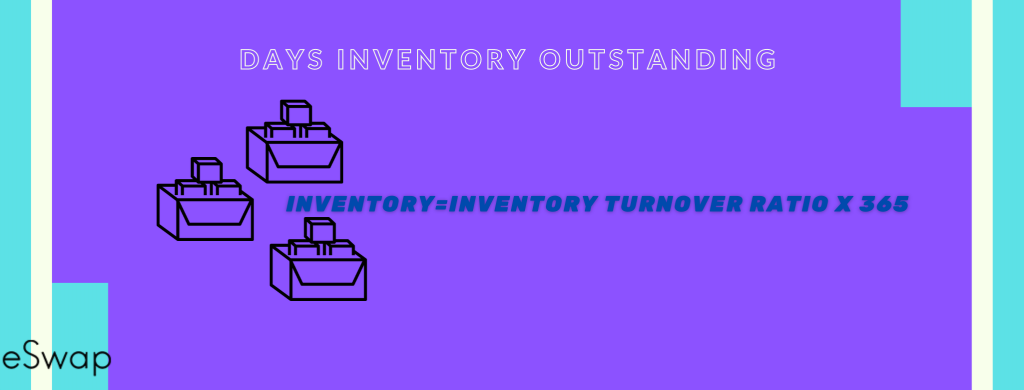How many times have we spoken about the need for good inventory management? And surely, no one will misvalue the importance of accurate inventory for running a successful business. If you are looking to beat your competitors you should be careful in every stage and detail connected with your management especially when it refers to the calculation of your inventory days.

What is Days inventory outstanding?
Days inventory outstanding or inventory days itself refers to the average number of days it takes to sell all the inventory. This measure is vital for businesses as it allows you to identify how effective you manage your inventory and how fast your inventory moves. The lower your DIO is the more optimized your inventory management is. And the faster your inventory turnover is the more free cash you handle.
Consequently DIO and turnover are inverse proportional values- the lower the days in inventory the faster the turnover. This maintains your retail business’ high-efficiency.
Calculating inventory days is a wonderful method to identify the advantages and disadvantages of inventory turnover compared to your competitors. Or just compare your results for a certain period.
How to calculate DIO?
Before starting the calculator of inventory days you should first of all identify:
Cost of Goods COGS
Cost of Average inventory
The number of days in a certain period(generally a year)
Days Inventory=Inventory turnover ratio x 365
That’s, firstly you should calculate the Cost of Goods Sold (COGS), secondly calculate the cost of average inventory, then divide the cost of average inventory by COGS and finally multiply the results by 365 (a year).
Or, in a short, inventory turnover ratio multiple by 365, where inventory turnover ratio is calculated by dividing the cost of average inventory by COGS.
Inventory turnover ratio=Cost of average inventory/ Cost of goods sold
*COGS is calculated by adding starting inventory and purchases, then subtract ending inventory
Cost of goods sold=Starting inventory+Purchases-Ending inventory
*Cost of average inventory is calculated by adding the beginning and ending inventory for a single month and dividing the result by two.
Cost of average inventory=Beginning inventory+Ending inventory/2
Your DIO level is directly connected with your business model, product types, etc.
For being more clear let’s bring the following example:
We have $15000 in COGS and $500 in inventory on average. Consequently, DIO would be:
Inventory Days=(500 / 15,000) x 365 = 12.16 days
Inventory turnover ratio shows how many times you sell and replace your inventory in a certain period. Low turnover means that your inventory is selling slowly and as a result, you handle more inventory than you need. Consequently, this situation causes many problems and decreases profitability.
Benefits of using Days Inventory Outstanding?
Being a retailer it is a need to know your days in inventory. This allows you to understand the effectiveness and profitability of your business. Moreover, it gives an accurate image of your whole inventory management system.
Let’s point the advantages of calculating days in inventory:
Accurate inventory forecasting and planning
Accurate inventory forecasting and planning is vital for the financial success of any business. It allows you to keep a strong balance in inventory and never go out of stock or overstock. Identifying your DIO gives an opportunity to have perfect forecasting of inventory.
Reduces the risk of deadstock
Deadstock causes too much-lost revenue and leads to a slow death. Almost all retailers meet this situation in some period, especially for seasonal items. Generally, deadstock is a result of bad purchasing decisions. Consequently controlling and keeping your DIO helps to decrease the risk of holding dead stock.
Improves cash flow
It’s not a secret that inventory is one of the largest expenses for any retail business. You should carefully look at your sales history and invest your cash accordingly. Improving your cash flow means to manage your expenses and cash. Calculation of DIO is one of the best methods to find out inventory that has a hard time turning over and managing cash flow reasonably.
Great comparison tool for investors
DIO is a good way to value the company’s management system. This metric allows us to compare several companies in the sphere and understand which one can effectively manage its inventory. Companies with a high inventory turnover ratio will be more profitable and preferred for investors than those with lower inventory ratio. The reason is too clear-a low inventory ratio causes overstocking, bad performance, and low productivity.







